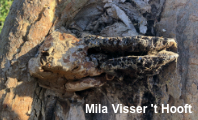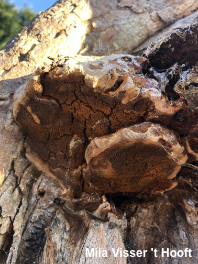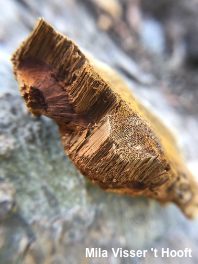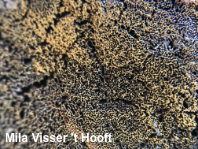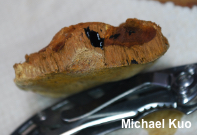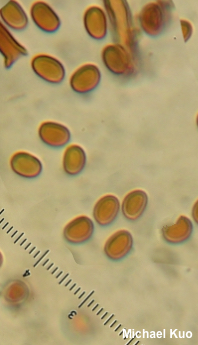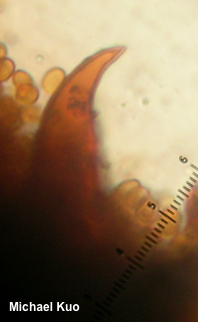| Major Groups > Polypores > Inonotus arizonicus |

|
Inonotus arizonicus [ Basidiomycota > Hymenochaetales > Hymenochaetaceae > Inonotus . . . ] by Michael Kuo Here is an interesting, smallish polypore found on Arizona and California sycamore trees (Platanus wrightii and Platanus racemosa), as well as on ornamental sycamores planted in the southwestern United States and California. It can be identified by its specialized habitat, along with its general appearance and microscopic features—including ellipsoid spores and funky, "hooked" setae. Thanks to Mila Visser 't Hooft for documenting, collecting, and preserving Inonotus arizonicus for study; her collection is deposited in The Herbarium of Michael Kuo. Description: Ecology: Parasitic on standing Arizona and California sycamore trees (Platanus wrightii and Platanus racemosa), as well as on ornamental sycamore species; also saprobic on the deadwood of western sycamores; growing alone or gregariously, often from wound locations; causing a white rot of the heartwood; annual, with long-lasting fruiting bodies that can be found year-round; distributed in the southwestern United States and in California; also reported from Baja California. The illustrated and described collection is from California. Fruiting Body: Usually featuring a well-defined cap, but sometimes effused-reflexed with only a short edge of "cap"; sometimes with caps piled up on top of each other. Cap: 7–12 cm across and up to 10 cm deep; hoof-shaped or nearly flat; medium brown; fairly bald; with a thick, rounded, buff-colored edge. Pore Surface: Brown to orangish brown; with 2–4 angular pores per mm; not bruising; tubes to about 1 cm deep. Flesh: Reddish brown; tough; with faint concentric zones; not changing when sliced. Chemical Reactions: KOH instantly black on flesh. Spore Print: Reported as "bright golden yellow" (Gilberton & Ryvarden 1986). Microscopic Features: Spores 5–6 x 3–4 µm; ellipsoid; smooth; orangish brown in KOH. Setae present in hymenium; 30–45 x 12 –15 µm; ventricose, with a "hooked" apice; thick-walled; orange-brown in KOH. Hyphal system monomitic; contextual hyphae 2–5 µm thick; thin- to thick-walled; occasionally septate; hyaline to reddish brown in KOH. REFERENCES: Gilbertson, 1969. (Goldstein & Gilbertson, 1981; Gilbertson & Ryvarden, 1986; Valenzuela et al., 2013.) Herb. Kuo 11151901. This site contains no information about the edibility or toxicity of mushrooms. |
© MushroomExpert.Com |
|
Cite this page as: Kuo, M. (2019, December). Inonotus arizonicus. Retrieved from the MushroomExpert.Com Web site: http://www.mushroomexpert.com/inonotus_arizonicus.html |
